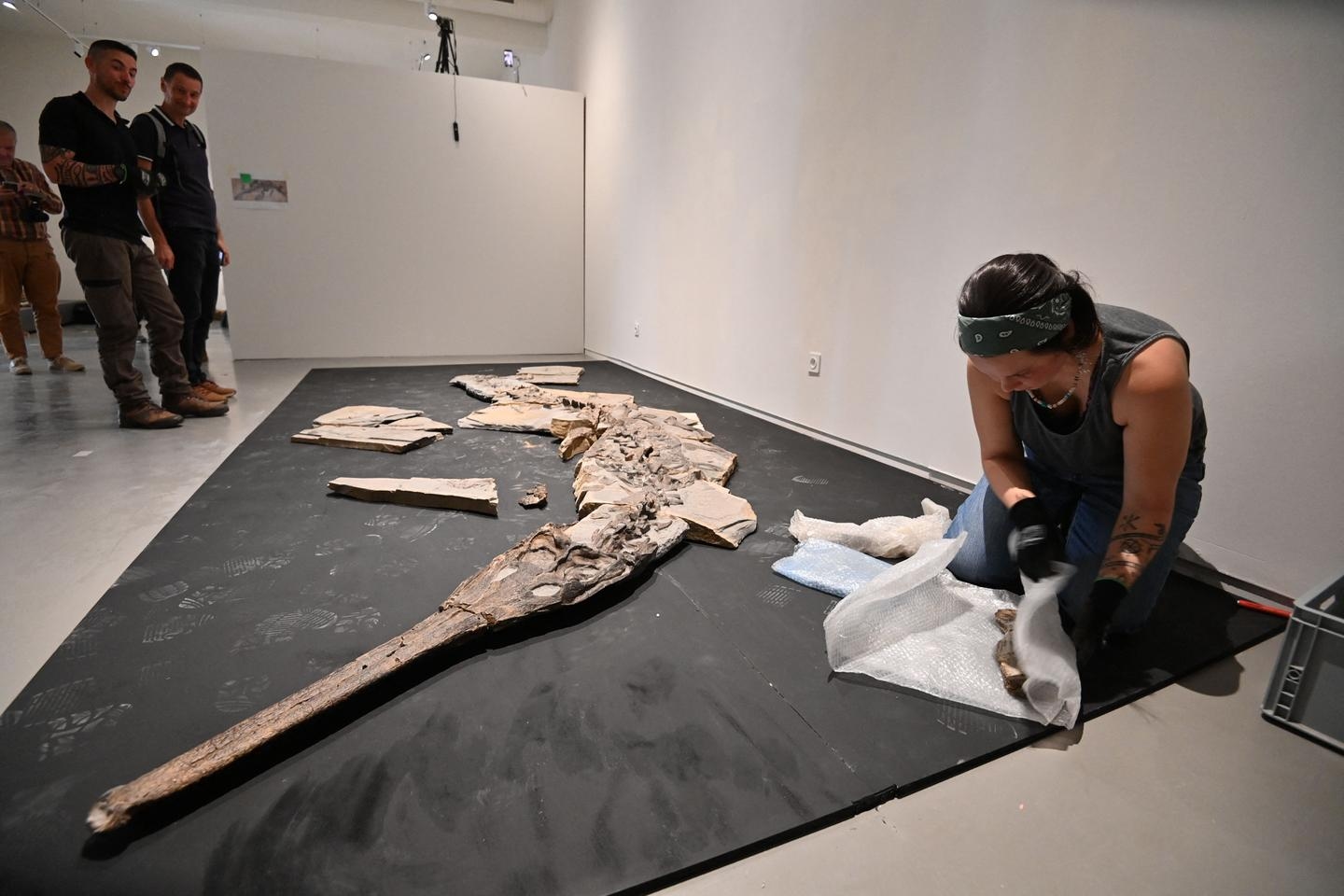A Jurassic saltwater crocodile, the centerpiece of an exhibition at the Lodève Museum

Up until the last moment, Camille Auclair worked on the puzzle of a saltwater crocodile nearly 5 meters long, which took her "five full months" to partially free from its stone shell. "A naturalist preparer" , she was entrusted by the Lodève Museum (Hérault) with this 180 million year old specimen, in the raw form of rocky plates: it was necessary to examine their slices to guess the presence of the animal. She freed it layer by layer "using compressed air micropercussions and sandblasting tools" .
On Friday, October 10, with Sébastien Enault, co-founder of their company Kraniata, she meticulously assembled the 27 pieces, revealing an animal with bones slightly deformed by a long geological sleep. "It is in an exceptional state of preservation and completeness ," enthuses Sébastien Enault. "It is one of the most extraordinary pieces that has passed through our hands."
They usually work mainly with current animals, for museums or laboratories, such as recently a giraffe, a whale skull, or a small two-headed dolphin. This work requires freeing the skeleton from its covering of skin, flesh, and viscera: you have to have a strong stomach. "You end up getting used to the smell, which is different for each species," says Sébastien Enault. For smaller animals, such as rodents, the scavenger beetles they breed are invaluable for cleaning the finest bones without damaging them.
You have 68.5% of this article left to read. The rest is reserved for subscribers.
Le Monde





